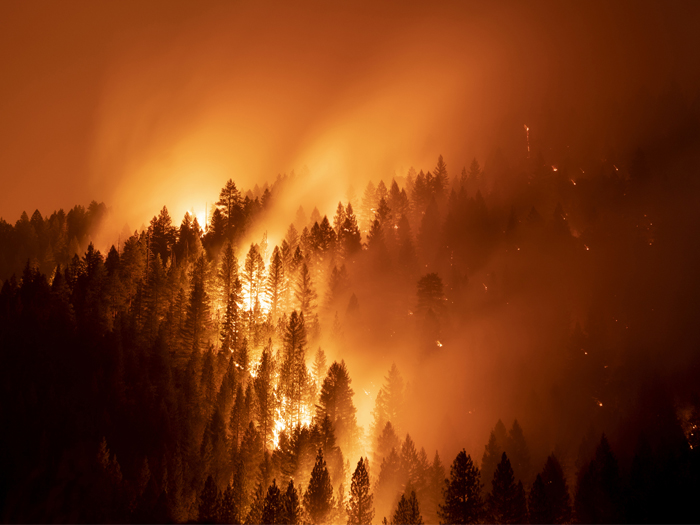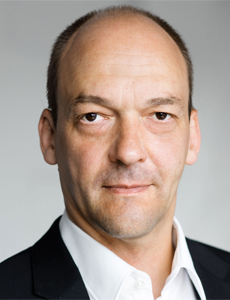7 Questions on Wildfire Risk for Carsten Brinkschulte of Dryad Networks

Climate change has undoubtedly accelerated the unpredictability, frequency and severity of wildfires across the world in recent years. As wildfires now account for up to 20% of global CO₂ emissions, it’s vital that they are detected and stopped early before they spread.
Carsten Brinkschulte, CEO of Dryad, explains why wildfires have become increasingly prevalent and discusses a new solution that could help tackle the problem more effectively than current practices.
Risk & Insurance: Why have wildfires become such a big problem in recent years and what role has climate change played?
Carsten Brinkschulte: Due to the visible effects of climate change, we are now experiencing more droughts that are affecting forested regions and therefore increasing the risk of devastating and fast-spreading megafires.
Dryad’s latest report, “What Lies Beneath: The Hidden Truth About Wildfire,” highlights that, with climate change accelerating, the frequency and damage caused by wildfire will increase substantially in the coming decades — posing increasing risks to businesses and communities around the world.
According to industry estimates, wildfires account for between six to eight billion tons of CO₂ emissions, which equates to an astonishing 20% of total global greenhouse emissions. This is equal to the environmental damage wrought by the entire global transport sector.
R&I: How are most wildfires started?
CB: Around 80% of wildfires are caused by humans, the vast majority caused by arson, reckless behavior or technical faults, such as a spark from a train line or track.
However, wildfires can be naturally occurring too.
These causes can vary depending on a particular region’s climate, vegetation and topography. Natural causes of wildfires include lightning strikes, volcanic eruptions and fires being ignited by the sun’s heat.
The most common cause among naturally occurring wildfires is lightning strikes. Lightning can hit power cables, trees or dry vegetation and cause forest fires to ignite. More than 12,000 dry-lightning strikes started in excess of 650 wildfires across California in August 2020, burning more than 1.5 million acres of land, with hundreds of thousands of people evacuated.
R&I: Which areas are most exposed to wildfires?

Carsten Brinkschulte, CEO, Dryad
CB: The insurance sector is highly exposed to the risk of wildfires. Insurance giant Swiss Re has highlighted how the cost of global insured claims due to wildfire events have soared to around $10 billion per year. By way of comparison, global insured claims for the entire period from 2000 to 2009 totaled less than $10 billion and rose to $45 billion for the entire period from 2010 to 2019.
Wildfires are becoming increasingly expensive for insurers, and many choose not to offer wildfire insurance as it becomes a more risky business year after year.
Insurance group Munich Re claims that insurers have paid out a running total of $17 billion so far on forest fires in the U.S. alone.
R&I: How quickly can a wildfire spread?
CB: Depending on weather conditions and the state of vegetation, a small fire can grow into the size of a football pitch in as little as 30 minutes, which means it is difficult or sometimes even impossible to contain without significant firefighting resources.
Unfortunately, ecologists at the University of California found that human-caused wildfires spread twice as fast as naturally caused ones, burn more intensely and kill “double or triple” the amount of trees.
Therefore, when it comes to mitigating the impacts of wildfires, detection time is of the essence. The earlier the fire department is notified of a fire start, the higher the chances that the fire can be extinguished before it spreads out of control. If the fire is small, often a single fire truck is sufficient to extinguish the fire.
R&I: How effective are traditional methods such as cameras and satellites at detecting wildfires?
CB: Existing systems that aim to tackle wildfires typically rely on satellites or cameras placed in the forest. However, these systems can take hours or even days to detect a fire as they cannot detect what’s happening under a tree canopy, which is where wildfires first start. These optical systems also have limited use at night.
In contrast, we can leave our sensors deployed in forests, under tree canopies, for up to 15 years of maintenance-free operation. Our technology accounts for forest canopy densities, and it can operate through the night — ensuring deployment and reliability in sparsely populated regions and difficult-to-reach forests.
As cameras and satellites have a slower response time, by the time firefighters arrive at the scene, the fire has often grown too large and can no longer be contained. In contrast, Dryad aims to detect wildfires within the first 60 minutes, enabling firefighters to extinguish the fire before it spreads out of control.
R&I: How does your technology work and how accurate and effective is it at tackling the problem?
CB: What sets Dryad’s Silvanet apart is its detection speed. Silvanet is an end-to-end solution that provides ultra-early forest fire detection, as well as health and growth monitoring solutions for public and private forests.
This is done using a wireless environmental sensor network based on LoRaWAN, the leading open standard for long-range radio internet of things (IoT) networks.
A key innovation of our system is a solar-powered mesh network architecture, which enables large-scale, off-grid deployments and overcomes problems with limited network coverage.
By taking advantage of the latest IoT developments, solar-powered sensors and mesh gateways, Dryad can build a network across even the most remote forest. With built-in artificial intelligence, our sensors are placed directly into forests to monitor air composition and can detect a fire at its smoldering phase.
The sensors then send an alert signal over our large-scale IoT mesh network architecture. Data is collected and monitored at our cloud monitoring platform, carrying ultra-early alerts of wildfires to the authorities and pinpointing the location within 60 minutes.
R&I: If deployed on a mass scale, how much could it save in terms of forests, emissions and economic losses?
CB: Wide-scale implementation of early detection technologies such as Silvanet could be groundbreaking and prevent the emission of hundreds of millions of tons of CO₂, as well as saving millions of hectares of vital forest.
A deployment of 120 million wildfire sensors worldwide by 2030 cumulatively could save up to 9.6 million acres of forest from burning and prevent 1.7 billion tons of CO₂ emissions.
R&I: What other risk mitigation techniques can be used to reduce the risk of wildfires?
CB: Effective forest fire management is a critical risk mitigation technique for reducing the damaging effects of forest fires. It involves various activities, including prescribed burning, thinning and clearing brush, removing dead trees and limbs, and creating check dams to stop erosion.
But early detection remains one of the most important parts of forest fire management. A wildfire monitoring system like Dryad’s Silvanet end-to-end solution significantly increases the chance of extinguishing fires before they spread out of control. &










